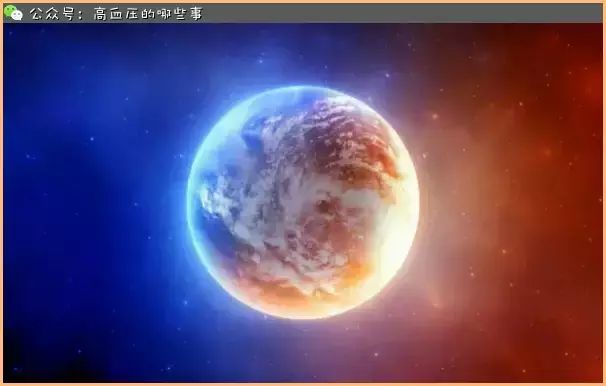What are the “Six Excesses” and what diseases can they cause when invading the human body?

The Six Excesses (Liuyin) refer to the six external pathogenic factors: Wind (Feng), Cold (Han), Heat (Re), Dampness (Shi), Dryness (Zao), and Fire (Huo). Under normal circumstances, these are referred to as the “Six Qi” and represent six different climatic changes in nature, which are conditions for the growth of all living things and are harmless to the human body. However, when climatic changes are abnormal, such as excessive or insufficient presence of the Six Qi, or when they appear out of season (for example, cold in spring when it should be warm, or heat in autumn when it should be cool), and when climatic changes occur too rapidly (such as extreme heat or cold), the Six Qi can become pathogenic factors that invade the human body, especially when the body’s righteous Qi is insufficient and resistance is lowered. In this case, the Six Qi are referred to as “Six Excesses”. The term “Excess” implies both excessiveness and infiltration; since the Six Excesses are considered improper Qi, they are also called “Six Evils”.
The general characteristics of diseases caused by the Six Excesses are closely related to seasonal climate and living environment. For instance, wind-related diseases are more common in spring, heat-related diseases in summer, dampness-related diseases in late summer and early autumn, dryness-related diseases in late autumn, and cold-related diseases in winter. Additionally, prolonged residence in damp areas often leads to dampness-related diseases, while working in high-temperature environments can lead to dryness or fire-related diseases. The Six Excesses can invade the body individually or in combination, leading to diseases such as wind-cold colds or damp-heat diarrhea.
During the onset of diseases caused by the Six Excesses, they can not only influence each other but can also transform into one another under certain conditions. For example, cold evil can transform into heat internally; prolonged heat and dampness can lead to dryness and damage yin. The Six Excesses primarily invade the body through the exterior, entering through the mouth and nose, or both simultaneously, hence they are also referred to as “external Six Excesses”.
【1. Wind】
Wind is the primary Qi of spring, but when excessive or untimely, it can cause illness in any season. Moreover, external evils such as cold, dampness, dryness, heat, and fire often attach themselves to wind to invade the human body. The nature and pathogenic characteristics of wind evil are as follows:
1. Wind is a Yang evil, characterized by its opening and dispersing nature. Wind evil is active and unrestrained, with characteristics of rising, ascending, and outward movement, making it a Yang evil. It easily invades the upper parts of the body (such as the head and face) and the exterior, causing symptoms like sweating and aversion to wind due to the opening of the skin and sweat pores. Because of its light and pervasive nature, wind-related symptoms can manifest in any part of the body.
2. Wind evil is prone to rapid changes. Diseases caused by wind evil can onset quickly, change rapidly, and the location of the disease can be erratic. For example, the rashes of urticaria can appear and disappear unpredictably; in wind bi syndrome, the joints and muscles of the limbs may experience migratory pain. Thus, the “Su Wen: On Wind” states: “Wind is good at movement and frequent changes.”
3. Wind is the leader of all diseases. Wind evil is the primary pathogenic factor among the Six Excesses; other evils such as cold, dampness, dryness, and heat often attach themselves to wind to invade the human body, making wind evil a precursor to other external evils.
【2. Cold】
Cold is the primary Qi of winter but can also be present in other seasons. When external cold evil injures the exterior, it is called “Shanghan” (injury from cold); when it directly invades the internal organs, it is called “Zhonghan” (internal cold). The nature and pathogenic characteristics of cold evil are as follows:
1. Cold is a Yin evil that easily injures Yang Qi. Cold is a manifestation of excessive Yin; “when Yin prevails, there is cold” and “when Yin prevails, there are Yang diseases”. When Yang Qi is injured by cold evil, it loses its warming and transforming functions, leading to a mixed pattern of excess cold and Yang deficiency. For example, when cold evil directly invades the spleen and stomach, symptoms such as vomiting clear fluids, diarrhea, and abdominal pain that prefers warmth may occur.
2. Cold has a constricting nature. The movement of Qi, blood, and body fluids in the human body relies on the warming and promoting functions of Yang Qi. When Yin cold evil is predominant, Yang Qi is damaged, obstructing the flow of Qi and blood in the meridians, leading to stagnation and pain. Therefore, cold evil injuries often manifest as pain.
3. Cold promotes contraction. Contraction refers to the pulling and tightening nature; when cold evil invades the human body, it can cause the Qi mechanism to contract, leading to tightness in the pores, meridians, and tendons. For example, when exposed to cold in winter, the body curls up, and the fingers and toes not only hurt but also have limited movement; when cold evil invades the exterior, the pores are blocked, and the defensive Yang is unable to disperse, leading to symptoms of aversion to cold, fever, and absence of sweating; when cold lodges in the blood vessels, it can cause headaches and body aches with a tight pulse.
【3. Heat】
Heat is the primary Qi of summer. The pathogenic effects of heat evil have a clear seasonal pattern, primarily occurring from the summer solstice to the beginning of autumn. The nature and pathogenic characteristics of heat evil are as follows:
1. Heat is a Yang evil, characterized by its inflammatory nature. Heat is the transformation of the hot air of summer; when one is affected by heat, symptoms such as fever, excessive sweating, irritability, and thirst for cold drinks, along with a rapid pulse, are common.
2. Heat has a dispersing nature, injuring fluids and consuming Qi. As a Yang evil, heat easily rises and disperses. Its invasion of the human body can cause the pores to open and lead to excessive sweating. Excessive sweating can injure body fluids, leading to thirst; profuse sweating often results in Qi deficiency as fluids are lost.
3. Heat often accompanies dampness. The summer climate is hot and often rainy, leading to a humid environment; thus, heat evil often combines with dampness, resulting in a mixed pattern of heat and dampness. Clinical manifestations include fever without relief, thirst, heaviness and fatigue, chest tightness, nausea, diarrhea, and a yellow greasy tongue coating.
【4. Dampness】
Dampness is the primary Qi of late summer. Due to its nature as a water vapor, dampness is considered a tangible evil. Humid climates, exposure to rain, or prolonged residence in damp areas can lead to dampness-related diseases, which can occur in any season. The nature and pathogenic characteristics of dampness evil are as follows:
1. Dampness tends to descend. Dampness is akin to water, which naturally descends; thus, the lower half of the body is more susceptible to dampness-related diseases, with symptoms often manifesting in the lower body, such as edema, sores, joint and muscle pain, or symptoms like turbid urination, leukorrhea, diarrhea, and dysentery, which are often related to dampness invasion.
2. Dampness is heavy and turbid. Dampness has a heavy and turbid characteristic, leading to symptoms of bodily heaviness and discomfort, as well as unclean secretions and excretions. When dampness invades the exterior, it can cause a heavy head, body discomfort, and aching limbs; if dampness stagnates in the meridians and joints, it can lead to joint pain, heaviness, and limited movement; if dampness flows to the lower jiao, it can cause turbid urination, diarrhea, or even purulent blood in stools, and in women, thick and foul leukorrhea.
3. Dampness is sticky and stagnant. Dampness has a sticky and stagnant characteristic. On one hand, it can adhere and stagnate in the body, making it difficult to resolve, leading to prolonged illness. On the other hand, dampness can linger in the organs and meridians, obstructing the Qi mechanism, resulting in symptoms such as chest tightness, short and painful urination, and unsatisfactory bowel movements. Prolonged dampness can damage Yang Qi, leading to a mixed pattern of dampness and Yang deficiency, resulting in diarrhea, edema, and reduced urination.
【5. Dryness】
Dryness is the primary Qi of autumn. Dryness can be classified into warm and cool types: early autumn is still warm, making one susceptible to warm dryness; late autumn is cool, making one susceptible to cool dryness. Warm dryness causes obvious heat symptoms, while cool dryness presents with cold symptoms. The nature and pathogenic characteristics of dryness evil are as follows:
1. Dryness is characterized by its dryness and can easily injure body fluids. Dryness is a dry and astringent evil, often damaging body fluids and presenting a series of dry symptoms, such as dryness of the mouth and nose, thirst, dry eyes, and dry, cracked skin.
2. Dryness easily injures the lungs. The lungs are delicate organs that prefer moisture and dislike dryness; thus, dryness evil, entering through the mouth and nose, most easily injures the lungs. Dryness can particularly damage lung yin, leading to symptoms such as nasal and pharyngeal dryness, dry cough with little phlegm, or phlegm that is difficult to expectorate, or even blood-streaked phlegm.
【6. Heat (Fire)】
Heat (Fire) evil generally does not have specific seasonal characteristics but is more common in spring and summer. Fire heat arises from excessive Yang and is similar to warm heat. Heat is a gradual increase in warmth, while fire is the extreme of heat. The nature and pathogenic characteristics of heat (fire) evil are as follows:
1. Heat is a Yang evil, characterized by its upward inflammatory nature. Fire heat belongs to Yang, which is characterized by dryness and upward movement; thus, heat can injure the body, leading to symptoms of heat and also disturbing the spirit, resulting in irritability, insomnia, mania, and delirium.
2. Heat easily consumes Qi and injures body fluids. Heat evil can easily deplete the body’s righteous Qi and is most likely to force fluids to leak out, depleting yin fluids, often accompanied by symptoms of thirst, dry throat, and chapped lips.
3. Heat can easily generate wind and move blood. When heat evil invades the body, it often scorches the liver meridian, consuming yin fluids and leading to internal wind, manifesting as high fever, delirium, limb convulsions, upward eye movement, and opisthotonos. Additionally, heat evil can accelerate blood flow, scorching the vessels, leading to various types of bleeding, such as hemoptysis, epistaxis, hematochezia, hematuria, and skin purpura.
4. Heat can easily cause swelling and sores. When fire heat enters the blood level, it can accumulate locally, eroding flesh and leading to abscesses and sores, characterized clinically by localized redness, heat, swelling, and pain.

☟ Click “Read the original text” for more…

